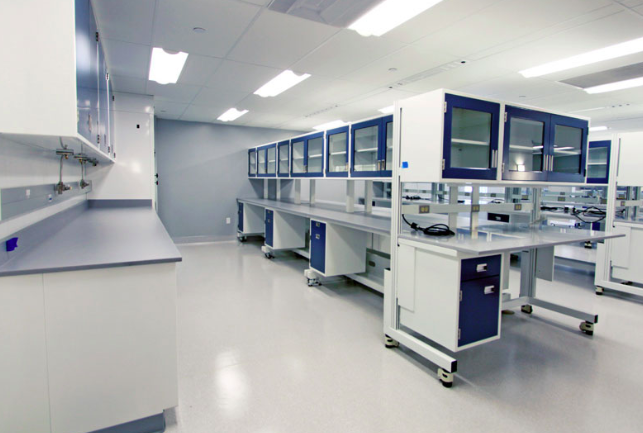Introduction
A biorepository is a center that functions to collect, process, store, and distribute tissue samples or specimens to support future research. These tissue samples can be sourced from humans or animals. The biorepository is responsible for maintaining the quality, accessibility, and distribution of these tissue samples.
Operations
Upon delivery the tissue samples are recorded all information regarding the sample details are keyed into the laboratory information management system.
Biospecimens are then processed to ensure consistency of the samples. Proper tissue preservation methodology is absolutely crucial to a biorepository.
These specimens are then stored and held in their appropriate conditions. Sample holding boxes and freezers are sometimes used, however it depends on the storage requirements. For example Formalin-fixed paraffin-embedded tissue blocks can be stored at room temperature.
Distribution involves retrieving the required samples from the inventory.
Standard Operating Procedures
Standard operating procedures (SOPs) are important for biorepositories as they help in the following:
Reduce problematic variables within the samples,
Ensure that biospecimens resemble specimens in their natural state,
Provide standards on how operations should be conducted.
Types and Uses of Biorepositories
There are many different types of biorepositories that exist. Some help with biomarker validation, and others are integrated with registries. Most biorepositories are focused on collecting biospecimens for specific diseases. Others function to identify genetic clues that can aid in the guidance of therapeutic development. Similair to disease-focused biorepositories there are those focused on the understanding of practices and habits. Biorepository sponsors can also vary. While some are funded as part of research to aid in the collection of specimens from participants, some are sponsored by organizations or medical centers to collect, process, and store samples from a wide variety of patients. Some biorepositories are organized by patient advocacy organizations to help kick-start research of specific diseases.
Examples
The Alzheimer’s Disease Neuroimaging Initiative – is a disease-focused biorepository and biomarker validation program that uses the samples and data collected from Alzheimer’s disease patients and patients with other forms of memory impairment.
The Health Outreach Program for the Elderly (HOPE) is a biorepository at Boston University that supports multiple studies. The HOPE registry follows up with their Alzheimer’s patients annually.
The United Kingdom Biobank is a biorepository with a broad focus. They aim to improve the diagnosis, treatment, and prevention of various diseases such as cancer, stroke, diabetes, heart disease, eye disorders, depression, dementia, and arthritis. In between 2006 to 2010, they managed to recruit half a million individuals between the ages of 40 to 69. Samples such as blood, saliva, and urine have been donated for analysis. These participants have also provided detailed personal information and consented to future follow up for many years to help researchers discover how various diseases develop.
The Autism Research Resource is sponsored by the state of New Jersey to research autism in families where more than one child is affected.
The Centers for Disease Control (CDC) Cell and DNA Repository use samples from transformed cell lines available through the Genetic Testing Reference Material Coordination Program. Some of the samples obtained are from diseases such as Cystic Fibrosis, Huntington Disease, Alpha Thalassemia, Fragile X syndrome, and Muenke syndrome.
The National Institute of Neurological Disorders and Stroke (NINDS) Human Genetics DNA and Cell Line Repository focuses on the identification of new genes that causes or contributes to conditions such as Parkinson’s disease, Tourettes syndrome, epilepsy, motor neuron disease, and cerebrovascular disease.
The National Institute of Aging (NIA) Aging Cell Repository utilizes cellular and molecular research to determine the degenerative mechanisms and causes of aging. They have strict diagnostic criteria with cells collected over a span of thirty years. Scientists are using these cultures to study diseases such as Alzheimer’s disease, Parkinson’s disease, Progeria, and Werner Syndrome.
The National Human Genome Research Institute (NHGRI) Sample Repository for Human Genetic Research successfully completed the sequencing of the human genome. They now aim to participate in a variety of studies that focuses on the understanding of the structure and function of the genome and the role it plays in disease and health.
The National Eye Institute Age-Related Eye Disease Study (NEI-AREDS) Genetic Repository was founded to identify how macular degeneration and cataracts develop and progress. This is important as these two conditions are two main causes of vision loss among older patients.
Conclusion
Biorepositories are crucial in supporting different areas of research such as those focused on a specific diseases, broadly focused population studies, identification of genetic mutations, and many more. These studies may have a specific length and purpose and are ongoing studies that follow up with their participants for many years.
References:
1) Biorepository. Wikipedia. Accessed 8/9/2018. https://en.wikipedia.org/wiki/Biorepository
2) Greenberg B, Christian J, Henry LM, et al. Biorepositories: Addendum to Registries for Evaluating Patient Outcomes: A User’s Guide, Third Edition [Internet]. Rockville (MD): Agency for Healthcare Research and Quality (US); 2018 Feb. Types and Uses of Biorepositories and Their Application to Registries. Accessed 8/9/2018. https://www.ncbi.nlm.nih.gov/books/NBK493635/



